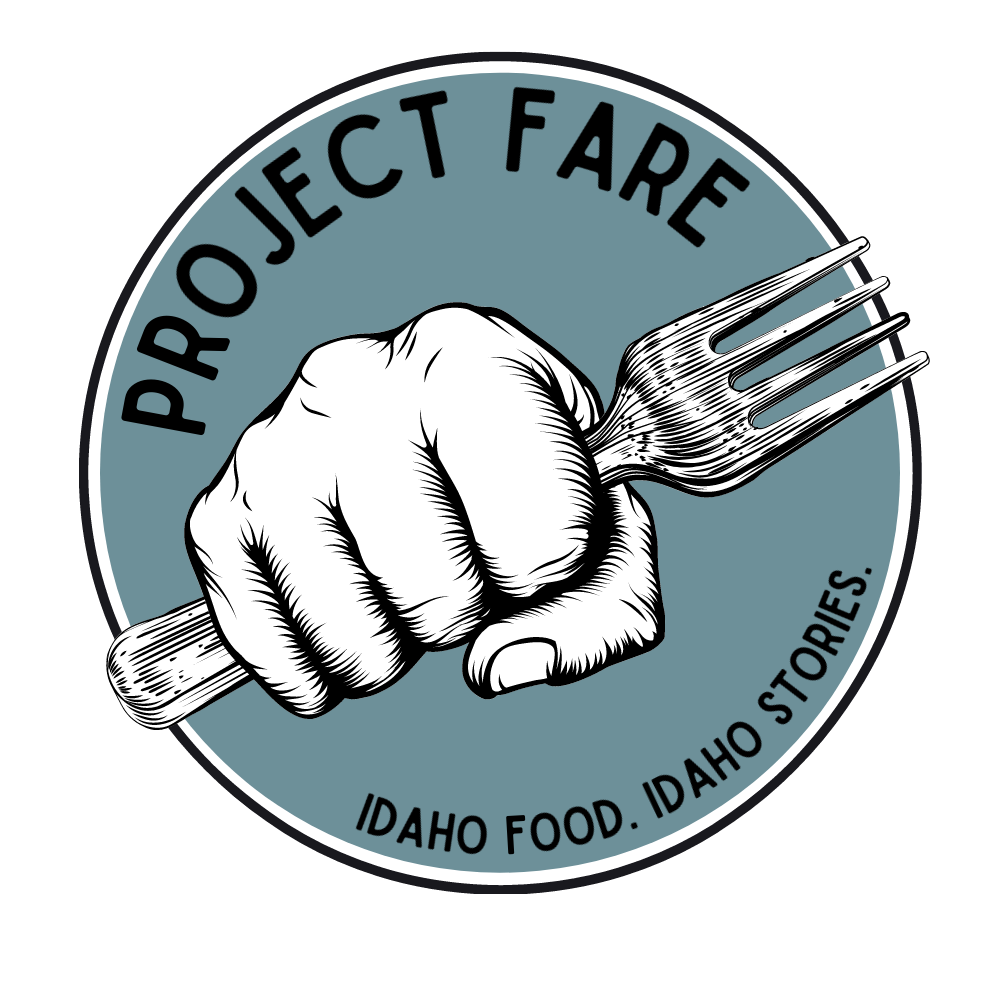Shopping Local For Urban And Rural
Farmers markets statewide establish community, promote local business and increase health
Written by Anteia McCollum
Photo by Anteia McCollum
The Local Way of Shopping
Every Saturday from May until October, vendors sell everything from farm fresh vegetables and potted herbs to handmade wooden spoons and stained glass decor at Idaho’s many farmers markets.
Photo by Anteia McCollum
Located throughout the state, from the urban Treasure Valley to the rural fields of the Palouse, farmers markets serve their communities while creating a unique one itself.
Whether you’re a parent with a toddler begging for pastries at every corner, a couple out for a nice morning date or a regular snatching the week’s groceries before they are gone, farmers markets are a way for all these types of people to come together in one place.
“In larger grocery store chains, with some checkout lines people say ‘I’d just rather not deal with anyone today,’ like the self checkout lines,” Amanda Argona, the Moscow community events manager, said. “That’s not the farmers market community. People thrive on the person-to-person interaction.”
Farmers markets do more than just create communities, they fuel them as well. There are areas called food deserts all over the Pacific Northwest where residents do not have regular access to more than gas station food, which is both expensive and lacking nutrition.
Photo by Anteia McCollum
Food deserts can be a large issue in both urban and rural areas for several reasons, including transportation, cost of food, nutrition quality and more.
Country Markets, City Markets, Farmers Markets
In Boise, the Boise Farmers Market started a program to help combat the existence of food deserts within their reach. The Mobile Market, which began in 2015, helps to support Boise residents and the local agricultural industry by making farm fresh food available in hard-to-reach areas every week.
“The whole idea is to reach people who either feel like because of their income they can't come to the regular market or they don't have transportation, or they are unable to get to the regular Saturday market,” Tamara Cameron, the market manager in Boise, said. “It really is to serve our lower income population in Boise.”
Mobile Market patrons don’t have to travel as far as they usually would to get locally sourced, more nutritious food. But in the rural counties of Northern Idaho, there isn’t quite enough funding and staff to give the communities who need to travel long distances a mobile market.
Photo by Anteia McCollum
However, rural farmers markets provide an opportunity to buy fresh food closer than where the nearest grocery store might be. This is especially important for patrons who are buying in bulk because it cuts out the middleman, creating a direct relationship between farmer and buyer.
“What's great about the farmers market atmosphere and community is there's no middleman,” Argona said. “You're putting the money directly into the hands of the maker, of the producer.”
People living miles from any town might need to drive over an hour to get to a grocery store big enough to support their needs.
Costco is where many people think of when considering buying in bulk, but there are only seven Costco warehouses in Idaho, according to their website. Shopping at Costco means buying groceries that are likely to spoil quicker, contain less nutrition, lack freshness and are shipped from afar.
Photo by Anteia McCollum
“If you get a poor product, you can go directly back to that source and say ‘I bought this pair of earrings from you at the farmers market and lost one, could you make me another one?’” Argona said. “If you go to a grocery store there's just ‘Oh OK, well let me return your money.’”
Along with customers receiving groceries sourced closer to home, the direct relationship between producers and buyers can be helpful with getting higher quality food to patrons, sorting out transactions, bargaining and other useful actions.
When shopping at farmers markets, many people are concerned about how expensive the products can get despite the quality or freshness. As a way to help support both local vendors and community health, many farmers markets have programs which accept payment from the federal Supplemental Nutrition Assistance Program (SNAP) through Electronic Benefits Transfer (EBT).
Both the Moscow and Boise farmers markets have programs which help give SNAP users more money for using their benefits. Moscow’s Fresh Bucks program will give $2 for every $5 spent with EBT. Boise’s DoubleUp Food Bucks program will match up to $20 spent with SNAP.
Photo by Anteia McCollum
Regardless of whether shoppers are in urban or rural areas, programs like the Mobile Market and acceptance of SNAP help get better, more nutritious food to those who need it most.
Community health is not the only thing benefitting from farmers markets statewide. The local economies see huge impacts from farmers markets. Many of the vendors in Moscow say they see a significant jump in profits when they attend the market.
“We put $1.4 million back into the Treasure Valley economy last year, in 2020 during the pandemic,” Cameron said. “In 2019, we put $1.7 million back into the economy. That is how much farmers made over the course of the summer.”
The whole community, whether only the market community or beyond, is improved by a flourishing farmers market. Being in a busy city with neighbors right next door or living where your closest neighbor is across the fields doesn’t matter when it comes to benefitting from the local market.






